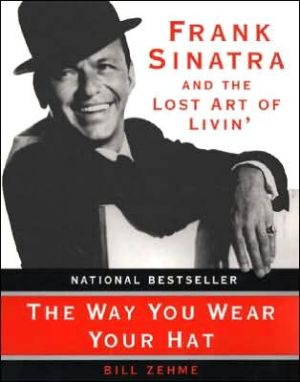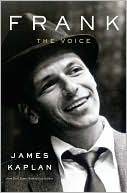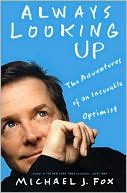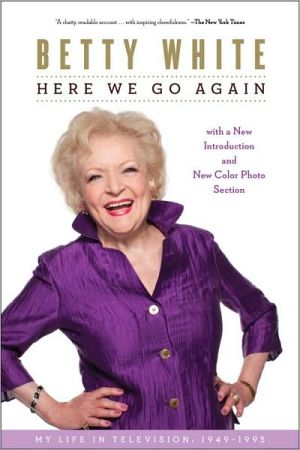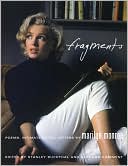Way You Wear Your Hat: Frank Sinatra and the Lost Art of Livin'
Within is a masterful assembly of the most personal details and gorgeous minutiae of Frank Sinatra's way of living—matters of the heart and heartbreak, friendship and leadership, drinking and cavorting, brawling and wooing, tuxedos and snap-brims—all crafted from rare interviews with Sinatra himself as well as many other intimates, including Tony Bennett, Don Rickles, Angie Dickinson, Tony Curtis, and Robert Wagner, in addition to daughters Nancy and Tina Sinatra. Illustrated with scores of...
Search in google:
Written with Frank Sinatra's cooperation, this biography of the singer is replete with stories and photos. Library Journal Narrator Brian Emerson reads this celebrity profile in a well-phrased pleasant voice, with limited emotion. This is not a formal biography of superstar powerbroker Frank Sinatra, who died in May at the age of 82. We learn his likes, dislikes, and behavior as singer, actor, and head of Hollywood's "Rat Pack." Missing are things like rumors of Mafia connections or reprisals against enemies like ex-son-in-law Tommy Sands. Friends, relatives, and Sinatra himself provided info. This man of talent was fascinating, if flawed. He craved to be the best and own the best, was generous to friends and relatives, and hated journalists who wrote unsympathetically about his public brawls and affairs with women. Although far from complete, this study provides a good deal. Recommended for popular biography collections.--Gordon Blackwell, Eastchester, NY
The Way You Wear Your Hat\ Chapter One\ The Way You Wear Your Hat\ \ Wee Small fella came up to me the other day with a nice story. He was in a bar somewhere and it was the quiet time of the night. Everybody's staring down at the sauce and one of my saloon songs comes on the jukebox. 'One for My Baby,' or something like that. After a while, a drunk at the end of the bar looks up and says, jerking his thumb toward the jukebox, 'I wonder who he listens to?' . . ."\ \ This concerns a young man whose chick has just split. She flew the coop . . . with another guy and all the bread, and left him with five gallons of some very bad sweet muscatel wine from the San Joachim Valley or Old Hee-Ho. Consequently, in order to become a winner, this fella proceeds to get himself properly bombed, grabbin' the grape for about five days. He's fractured, stoned; he's gassed, numbsville. It's his only way out. He can't figure it out sensibly. Then he decides one morning, at about one or two a.m., to come out and get among the mainstream to see if he can live with us again. He's looking for somebody to talk to. It's obvious that he's got a lot of problems. And it's all summed up in two words: a broad. Now let's face it—wars you can win. Hitler you can beat, but not a dame. Oh, it's murder, doc, I tell you—moider! (Shake hands with the vice-president of the club!) Now, he doesn't want answers; he just wants to speak his piece. Finally, near closing time, he falls into a small, dimly lit bar, a very tiny place, where a pianist is playing quietly in a corner. And the bartender is his victim. So if you will now assume the position of the bartender, you'llhear his tale . . .\ —saloon soliloquy,\ a composite sketch from a thousand nights\ \ Alone, where does one go in the dark night of the soul?\ "Wake up! . . .\ You know what loners are: Losers."\ \ Frank Sinatra did not like to be alone. Alone, he was anxious, even a little fearful. Alone, he was not himself. And if he were not himself, all loners would be lonelier, more lost, without a beacon. Irony: "Did you hear the story about the fellow who was walking around New York?" he would say, starting a favorite joke that haunted him always. "The town gets hit with an A-bomb—how's that for an opener?—and he's the only man left. He's walking around, takes four or five days, and he's finally lonely. There's nobody to talk to. So he goes up to the remains of some tall building—and he goes over the side. He's passing the sixteenth floor—and that's when he hears a phone ring." That joke never really got laughs, but the point resonated hard. He would never be that guy.\ And so, for only the lonely, he sang the rhetorical question: "When you're alone, who cares for starlit skies?" Not him, that's who. When he was alone, night was a bitch, a black hole, a bitter void. Night required company, required fortification and reinforcements. Since the forties, he would not take on the night, any night, single-handedly. So he marshaled troops to sit with him, to drink and to smoke and to laugh with him. "The thing Frankie doesn't seem to understand is that the body's got to get some sleep," a bedraggled friend complained four decades ago. At that moment, the New York Times declared: "He fights a relentless battle against sleeping before sun-up." Even in the sixties, messing around on his cockamamie two-way radio, he gave himself the handle "Night Fighter."\ The fight never ceased, not ever.\ Sleep: dullsville, numbsville, weakness. He wouldn't even do it on airplanes. Awake, he was aware, which was all. Be aware, he always told Nancy Jr., had the words inscribed on her St. Christopher medal, on her first keychain. "It's the number one priority," she says.\ He would break more dawns than most mortals. Each one was his triumph, the death of each night. He had survived yet another one. "He feels reborn in the morning light," his daughter Tina once attested. When horizons brightened, he exulted over the spoils of war. "Look at the colors!" he would say, pointing bleary comrades toward thousands of sunrises. "What kind of blue would you call that?" He called the tint of sky that offered him most peace Five O'Clock Vegas Blue. "You have to see it to know it," he dared disbelievers. Steve Lawrence, who saw his share of Vegas Blue, says, "I've told him he's probably the last of the Italian vampires."\ How Frank did it: Power naps sustained him. Long ago, he learned to doze on band buses rumbling across lost highways. After that, planes notwithstanding, he could do it anywhere, anytime, sitting up, and still maintain the creases in his tuxedo trousers.\ \ Woe to those missing. More woe to those who greeted dawns by his side. It is there that scores of men slumped, trapped, for he insisted nobody leave. They could not hit the hay before he did, and they had to drink apace with him until the finish. It is a sore, but proud, subject among them all. They groan, lovingly, when they speak of it. Hank Cattaneo, who oversaw all technical aspects of the later concert years, would recall, "By four in the morning, I'd had enough Jack Daniel's, so I got a bartender to color Coca-Cola with water so he'd think I'm still with him." Sinatra usually caught on anyway, for he was omniscient in this area: Road manager Tony Oppedisano, or Tony O., nearly half the Old Man's age, around him for the last decade, says, "I've been with him nights where he put away a gallon of booze, and I wasn't too far behind him. He made sure. Because every once in a while he'd say, 'How's your drink? Let me taste it.' That way he knew it wasn't iced tea."\ Begin to nod off, he would say, "Hey! What are you doing? Wake up!" Rise from the table, he would say, "Where the hell are you going?"\ \ The Way You Wear Your Hat. Copyright (c) by Bill Zehme . Reprinted by permission of HarperCollins Publishers, Inc. All rights reserved. Available now wherever books are sold.
\ From Barnes & NobleThe Barnes & Noble Review\ "I think my real ambition is to pass on to others what I know," Frank Sinatra once said. "It took me a long, long time to learn what I now know, and I don't want to die with them." Author and Esquire senior writer Bill Zehme has compiled in this book exactly that. Based on a series of surprising exchanges with Frank Sinatra that appeared in a 1996 Esquire feature, "And Then There Was One," this book presents the unique and undeniable Sinatra mystique in Sinatra's own words, supported by remembrances and quotes from intimates, friends, as well as Zehme's own assessment of what Sinatra personified and scores of classic black and white Sinatra photographs, some never before published. Assembled are the most personal details and minutiae of how the role of Frank Sinatra was played out in everyday life in matters of the heart and heartbreak, coolness and swank, friendship and leadership, drinking and cavorting, tuxedos and snap-brims. Some of the questions: Alone, where does one go in the dark night of the soul? What makes a perfect after-hours joint? How stiff should a stiff drink be? What color should no real man wear? What is the most important thing to look for in a woman? What is the most important a father can tell his children? Capturing the timeless romance, glamour, and classic style of the fifties and sixties, when Sinatra was at the peak of his powers, this book is sure to click with Sinatra fans\ \ \ \ \ Library JournalNarrator Brian Emerson reads this celebrity profile in a well-phrased pleasant voice, with limited emotion. This is not a formal biography of superstar powerbroker Frank Sinatra, who died in May at the age of 82. We learn his likes, dislikes, and behavior as singer, actor, and head of Hollywood's "Rat Pack." Missing are things like rumors of Mafia connections or reprisals against enemies like ex-son-in-law Tommy Sands. Friends, relatives, and Sinatra himself provided info. This man of talent was fascinating, if flawed. He craved to be the best and own the best, was generous to friends and relatives, and hated journalists who wrote unsympathetically about his public brawls and affairs with women. Although far from complete, this study provides a good deal. Recommended for popular biography collections.--Gordon Blackwell, Eastchester, NY\ \ \ Library JournalA biography of Frank Sinatra, written with Sinatra's cooperation and published in time for his 82nd birthday on December 12.\ \
